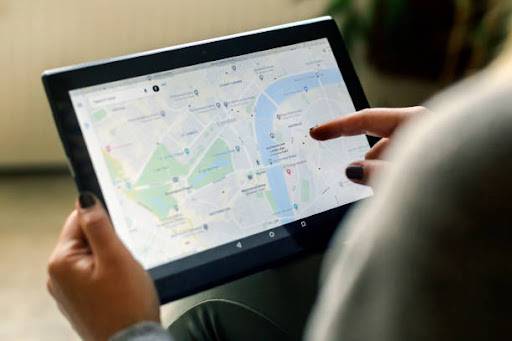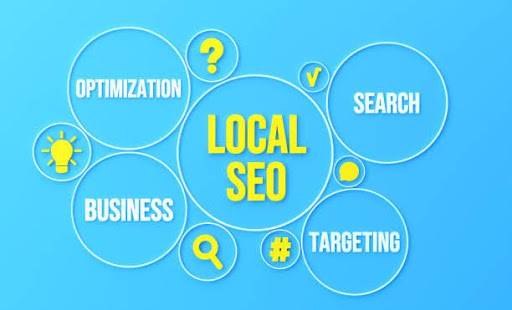As artificial intelligence becomes more integrated into the digital landscape with local SEO Dallas content, Google has implemented AI detection tools to maintain the quality of search results. This means that content lacking originality, relevance, and authenticity is increasingly likely to be flagged or penalized. For local businesses relying on SEO to connect with their community, maintaining a clean reputation with Google’s algorithms is essential for driving organic traffic and staying competitive.
In this guide, we’ll walk through actionable strategies that ensure your content remains valuable, genuine, and trustworthy for users and Google alike.
1. Understand Google’s AI Detection Objectives local SEO Dallas content
Google’s primary goal is to provide users with the most relevant, high-quality content available. If AI-driven content is overused, or if it lacks a unique touch, Google’s algorithms can often detect it and may rank it lower. This is especially true for local SEO, where personalized and community-focused content is key to engaging your target audience.
To avoid being penalized by AI detection tools, it’s important to:
- Focus on creating content that truly benefits local readers.
- Use natural language that sounds like it was written by a human, not generated.
- Highlight local insights and relevant information that AI might not easily replicate.
2. Prioritize Local Relevance Over Generic Content
For local SEO Dallas, the more specific and relevant you can be, the better. Google’s algorithms value content that addresses the needs, questions, and interests of a particular community. AI-generated content often feels generic because it lacks local insights, which can make it easier for Google to detect and downgrade.
Example:
Instead of writing a generic blog post on “Top Tips for SEO,” focus on a location-specific topic like “Dallas Local SEO Tips: How Small Businesses Can Rank Locally in 2024.” Tailor your content to highlight Dallas trends, events, or case studies, which will make it far more relevant for local readers.
Quick Tips:
- Use local news or statistics that are meaningful to your audience.
- Mention local landmarks, events, or cultural references when applicable.
- Showcase testimonials from local customers or case studies that reflect your specific experience in the community.
3. Avoid Keyword Stuffing and Forced Language
Keyword stuffing and overly optimized language are big red flags for Google’s AI detection tools. Keywords are essential for Local SEO content, but they must be incorporated naturally. When AI is used to generate content, it sometimes repeats keywords excessively or creates awkward sentences to optimize for search. This can result in penalties, as Google values readability and relevance.

Best Practices for Keywords:
- Use your primary keywords naturally throughout the text. Aim for a conversational tone that keeps your language smooth and approachable.
- Mix in variations of your primary keywords to avoid repetition and to make the content more fluid.
- Prioritize readability over keyword density. If a sentence sounds odd or “off” because of keyword placement, it’s best to rephrase it.
For example, instead of stuffing “Dallas local SEO” into every paragraph, use variations like “SEO strategies for Dallas businesses” or “how Dallas businesses can benefit from local SEO.”
4. Add Local Insights and Personal Experience
AI-generated content often lacks the depth and authenticity that comes from personal experience. To make your content genuinely helpful and appealing to both readers and Google, incorporate insights from your own experience in the local market. This will not only establish your authority but also make your content more engaging.
Practical Applications:
- Share real-life examples: Describe specific experiences or challenges you’ve encountered with local clients.
- Highlight community engagement: If you’ve participated in local events or initiatives, mention them in your content. Google recognizes and rewards this local involvement.
- Offer practical tips: Provide actionable advice that reflects your hands-on knowledge. For instance, if you know the best places in Dallas to list a business for local SEO, mention them by name.
By personalizing your content, you make it difficult for Google’s AI detection tools to flag it as generic or low-value.
5. Showcase Your Expertise and Authority (E-E-A-T)
Google places a strong emphasis on E-E-A-T: Experience, Expertise, Authoritativeness, and Trustworthiness. In local SEO, building authority is crucial because users need to trust that you know the ins and outs of their area. Here are some ways to demonstrate E-E-A-T in your content:
- Add your credentials: Mention your years of experience or any certifications related to your industry.
- Cite reputable sources: Link to credible sources when discussing statistics, trends, or case studies.
- Use testimonials: Share feedback from clients in your area to build trust and reinforce your expertise.
Incorporating E-E-A-T principles not only adds credibility to your content but also makes it harder for Google to flag it as generic or low-value.
6. Avoid Duplicate Content and Content Spinning
Duplicate content, or content that’s too similar to other materials online, can lead to penalties. This can happen if you’re using AI to “spin” or rephrase content, as these tools may simply swap words or rearrange phrases without creating truly new material. For local SEO, it’s vital to ensure each piece of content you create is original and tailored to your audience.
Tips for Ensuring Originality:
- Rewrite content in your own words: If you use AI for brainstorming, rewrite the content in a way that sounds personal and unique.
- Run content through a plagiarism checker: This can help you confirm that your content is original before publishing.
- Add fresh insights: Infuse your local knowledge or expertise to make the content distinct.
By focusing on originality and local relevance, you not only avoid duplicate content penalties but also create material that resonates more with your audience.

7. Use AI as an Assistant, Not a Substitute
AI tools are excellent for helping generate ideas or format content, but they should never replace a human touch. Instead, use AI to enhance your content creation process rather than letting it fully dictate the result.
Ways to Use AI in Your Workflow:
- Generate content outlines: AI can help with structuring topics or organizing ideas, but always review and adjust them.
- Perform light editing: Use AI for minor tweaks, like rephrasing or grammar, but keep the main content in your voice.
- Brainstorm topic ideas: AI tools can be helpful for generating lists of topics, which you can then research and expand upon.
By keeping AI’s role limited to assistance rather than creation, you avoid over-reliance on machine-generated text, helping your content remain unique and human-centered.
8. Regularly Update and Audit Content
Staying up to date with Google’s guidelines and AI detection capabilities is essential. Older content can become outdated or overly keyword-stuffed, especially if it was created using AI tools in the past. Auditing and updating your content will help you avoid potential penalties and keep your local SEO Dallas content strategy current.
Conduct a Content Audit:
- Review old posts for any overused keywords, generic phrases, or awkward language that may trigger AI detection.
- Refresh outdated information and replace it with current data, statistics, or trends.
- Improve readability and ensure that every piece aligns with Google’s current content standards.
By periodically refreshing your content, you ensure that your site continues to offer genuine value without triggering any red flags with Google’s AI detection tools.
9. Add Visual Elements and Interactive Content
Visual content—such as images, infographics, and videos—enhances user experience and makes it more engaging for your audience. Google favors content that keeps users on the page longer and provides a richer experience. For local businesses, visual content can reflect community involvement, local landmarks, or events, making it even more relevant for your target audience.
Suggestions:
- Add local photos: Show images of your community, whether it’s local events, recognizable landmarks, or storefronts.
- Use infographics: Simplify complex ideas or statistics into a visual format to increase engagement.
- Create interactive elements: If possible, include elements like polls, quizzes, or maps that engage users.
Conclusion
Staying aligned with Google’s AI detection tools is essential for a strong local SEO presence. By creating unique, audience-centered content that resonates with your community, you establish yourself as a trusted authority while avoiding the risks of over-relying on AI.
As a local business, it’s your expertise, firsthand knowledge, and connection to your community that set you apart. Prioritizing authenticity, relevance, and quality is the best way to connect with both your audience and Google’s search algorithms. With us at Local SEO GMB Marketing, you’ll have the expertise needed to optimize your local SEO content in Dallas effectively, ensuring your business growth and enhanced visibility. Reach out to us Today.









